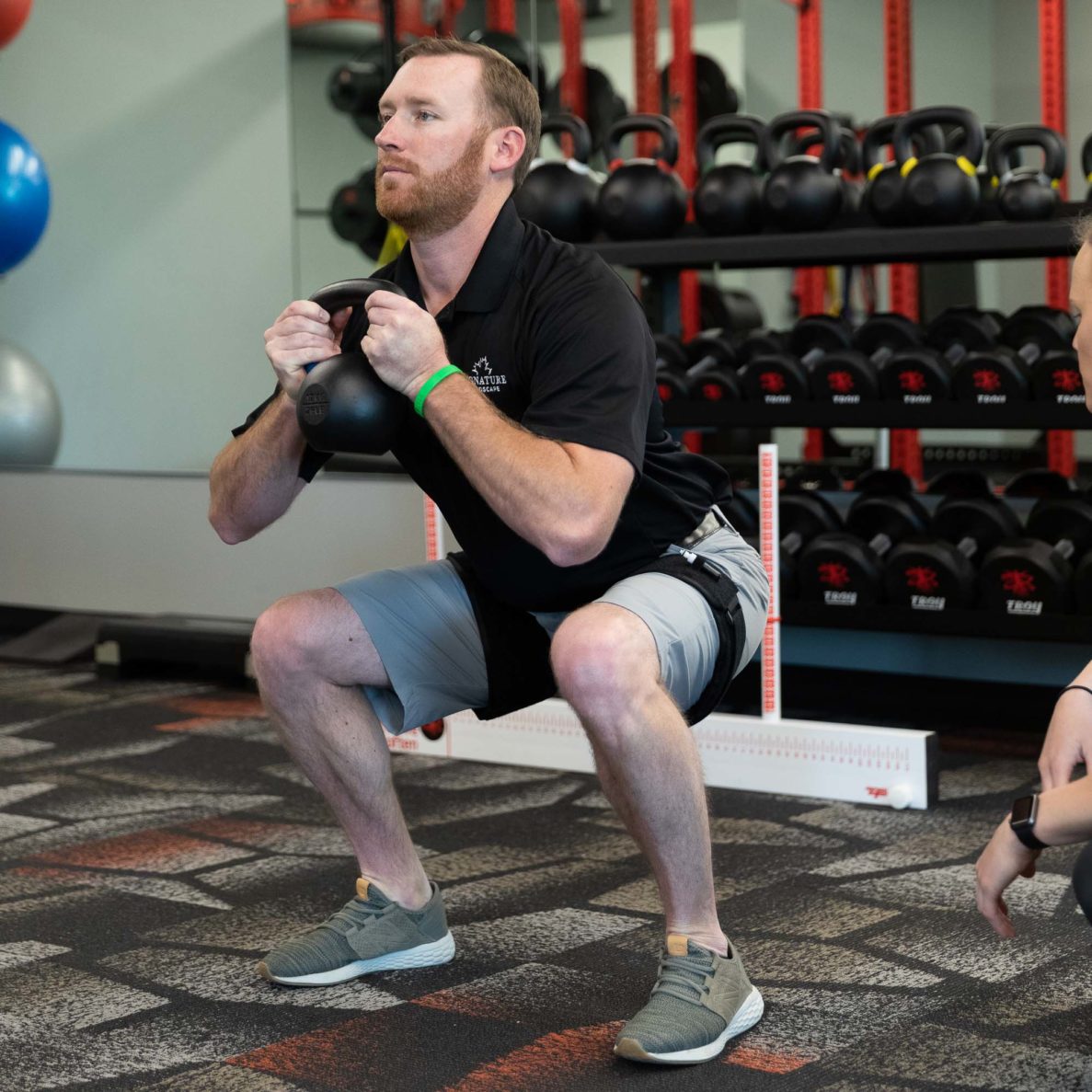
Blood Flow Restriction Training in Kansas City (B.F.R.) helps improve strength and hypertrophy outcomes in low-load conditions, maximize sports performance capacity, and minimize atrophy post-surgery.
Blood Flow Restriction Training in Kansas City
Blood Flow Restriction Therapy
Through research, we know that in order to truly achieve improvements in muscular strength and size, we must use loads and intensities that generate enough of a stimulus to cause tissue change (most research shows using less than 65% of your 1-rep max for any given movement). However, what happens when you can’t use a load like this? What about post-surgical conditions or situations where we need to protect healing tissues? What if you want to achieve maximal sports performance and work capacity outside of the presence of an injury—or even improve aerobic capacity? That’s where our chiropractors come in with proven techniques, including Blood Flow Restriction Training in Kansas City.
What It Treats
Blood Flow Restriction Training in Kansas City can help with:
- Rehabilitation & injury recovery
- Improving performance, muscle hypertrophy, and work capacity
- Maximizing outcomes both pre- and post-surgery
- Minimizing muscle loss post-surgery and enhancing tissue healing (including bone healing, tendon/ligament healing)
- Improving aerobic capacity
- Improving recovery capacity from training
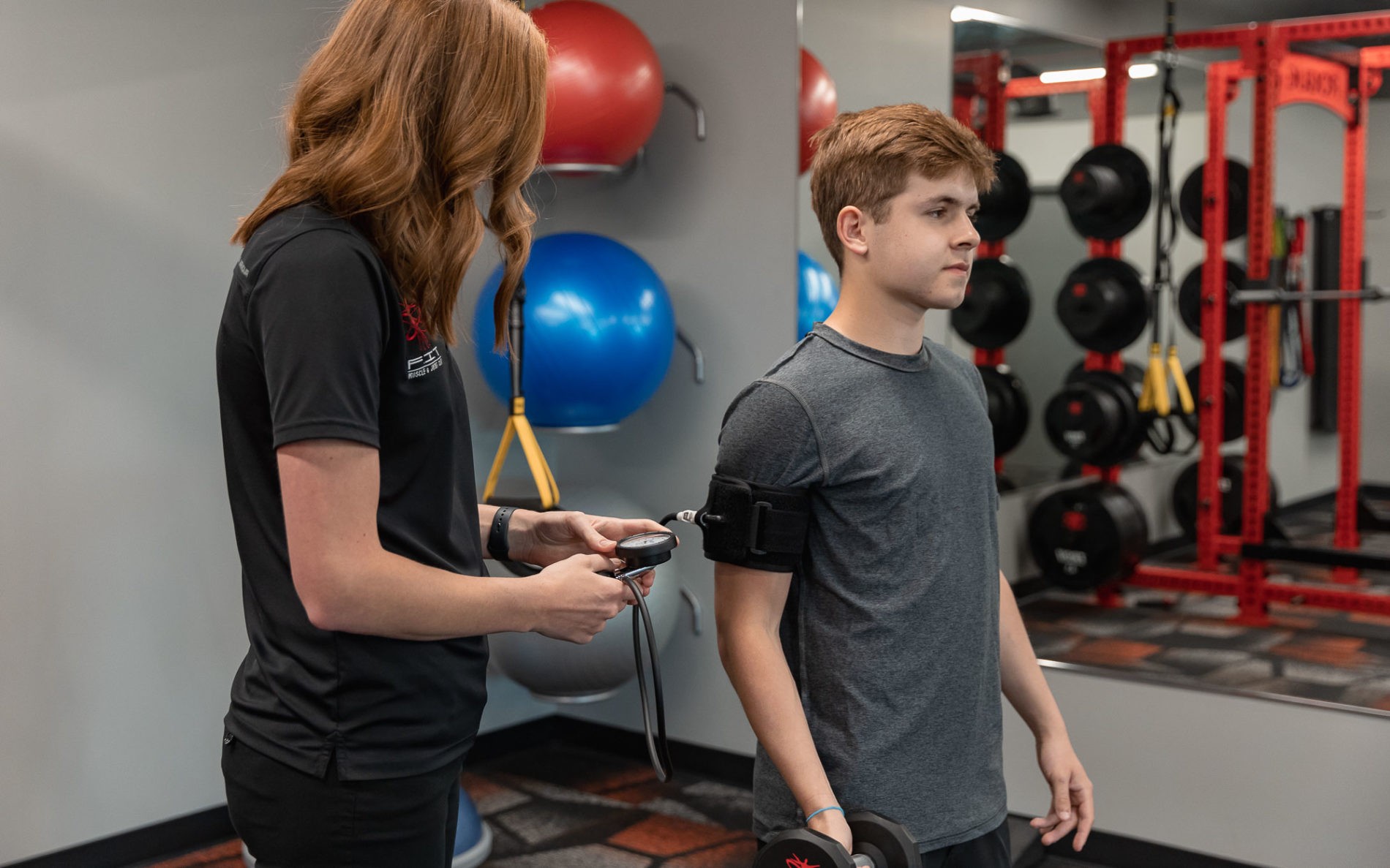
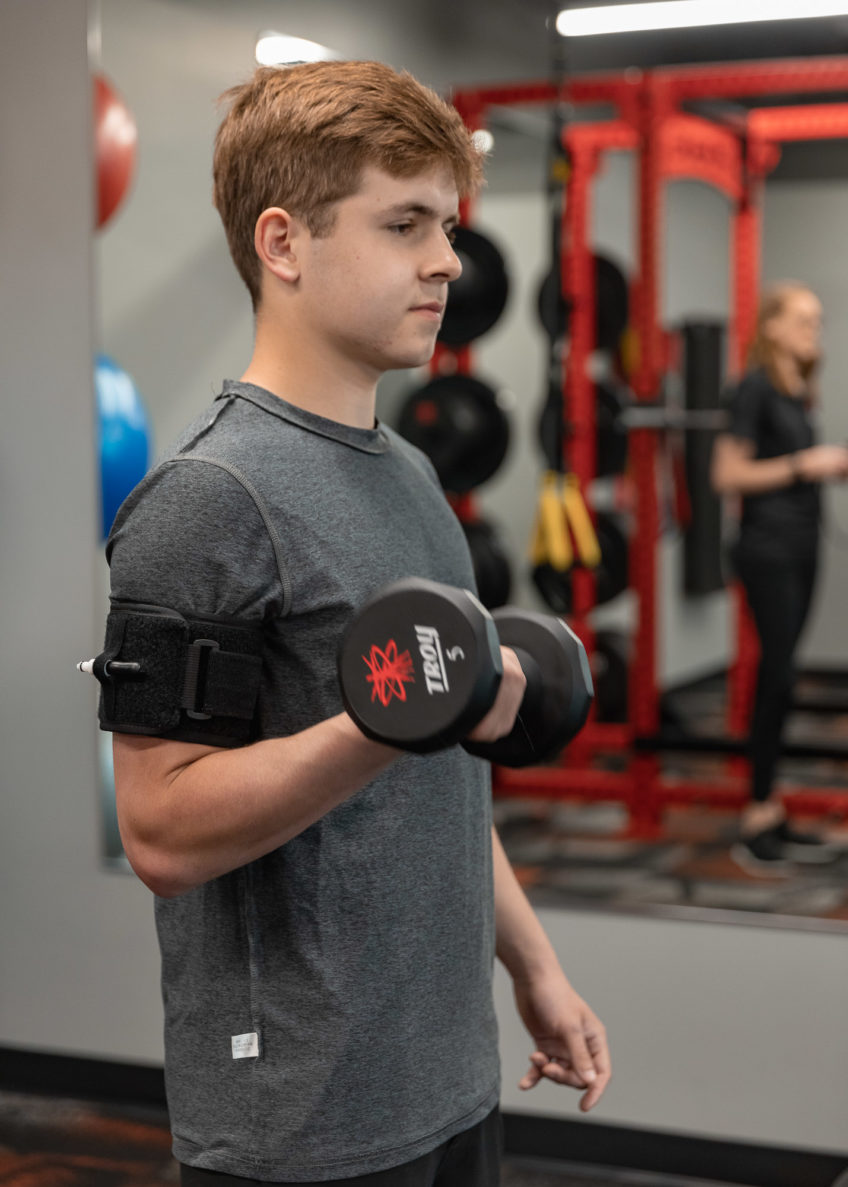
How Blood Flow Restriction Training Works
Blood Flow Restriction (or BFR) uses a cuff placed on the upper or lower extremities to briefly restrict the arterial and venous blood flow, either during rest or while performing an exercise. This can achieve significant improvements in muscular size and strength while using significantly lower loads on the tissue.
The results of this brief occlusion has numerous physiological and metabolic effects (both local and systemic) that lead to this improvement in hypertrophy, as well as tissue healing & recovery and aerobic capacity.
To fully understand the ins and outs of Blood Flow Restriction Training in Kansas City, it is best to understand how muscle hypertrophy (growth) and strengthening occur. Simply put, muscle hypertrophy and strengthening occurs when protein synthesis happens at a faster rate than protein breakdown (is able to rebuild more than be broken down), and when there is enough load and strain to the working tissue to create a change.
With traditional workouts, especially in weightlifting, some form of protein breakdown will happen. In a sense this is muscle damage. When you lift weights, the extra load causes stress on the body, leading to an inflammatory reaction. This reaction then stimulates the body to build more muscle.
When doing normal workouts, muscle growth would require someone to lift at least 65% of his or her 1-rep max, and strengthening would require that same threshold or even higher. The 1-rep max is the maximum load the body can handle while performing one rep.
Therefore, if a person’s squat 1-rep max is 200 pounds, he or she would need to lift at least 130 pounds during a session to generate a hypertrophy response. Lifting in this threshold would fall under high-intensity training, because it demands that the body changes and adapts, and there is enough strain and fatigue to the system to generate a change.
However, injuries and other factors may limit a person from reaching that 65% threshold OR train intensely enough to truly reach a fatigued state in the muscle tissue. This can be a major concern in these situations, because if you fail to either generate enough strain on the system by load or fatigue, then the ultimate result will be a loss of muscle mass, strength, and functional capacity (whether you are a weekend warrior or a high-level athlete)
Fortunately, blood flow restriction training allows an individual to continue to stimulate a muscle strength and hypertrophy response and work until a fatigued state is reached with significantly lower overall loads (usually around 20-30% of 1-rep max) while preserving potentially compromised or injured tissue.
With the help of cuffs placed on the upper and lower extremities (for arms just below the shoulder; for legs just below the hip), BFR restricts venous blood flow while still promoting arterial blood flow. In other words, blood flows into the muscles, but does not flow out as freely. As a result, blood pools within the muscle, causing swelling and overload without heavy weights.
That means muscles go through less protein breakdown but more protein synthesis. Because of this, many of our patients at F.I.T. Muscle & Joint Clinic notice muscle growth despite not lifting as heavy as they could before.
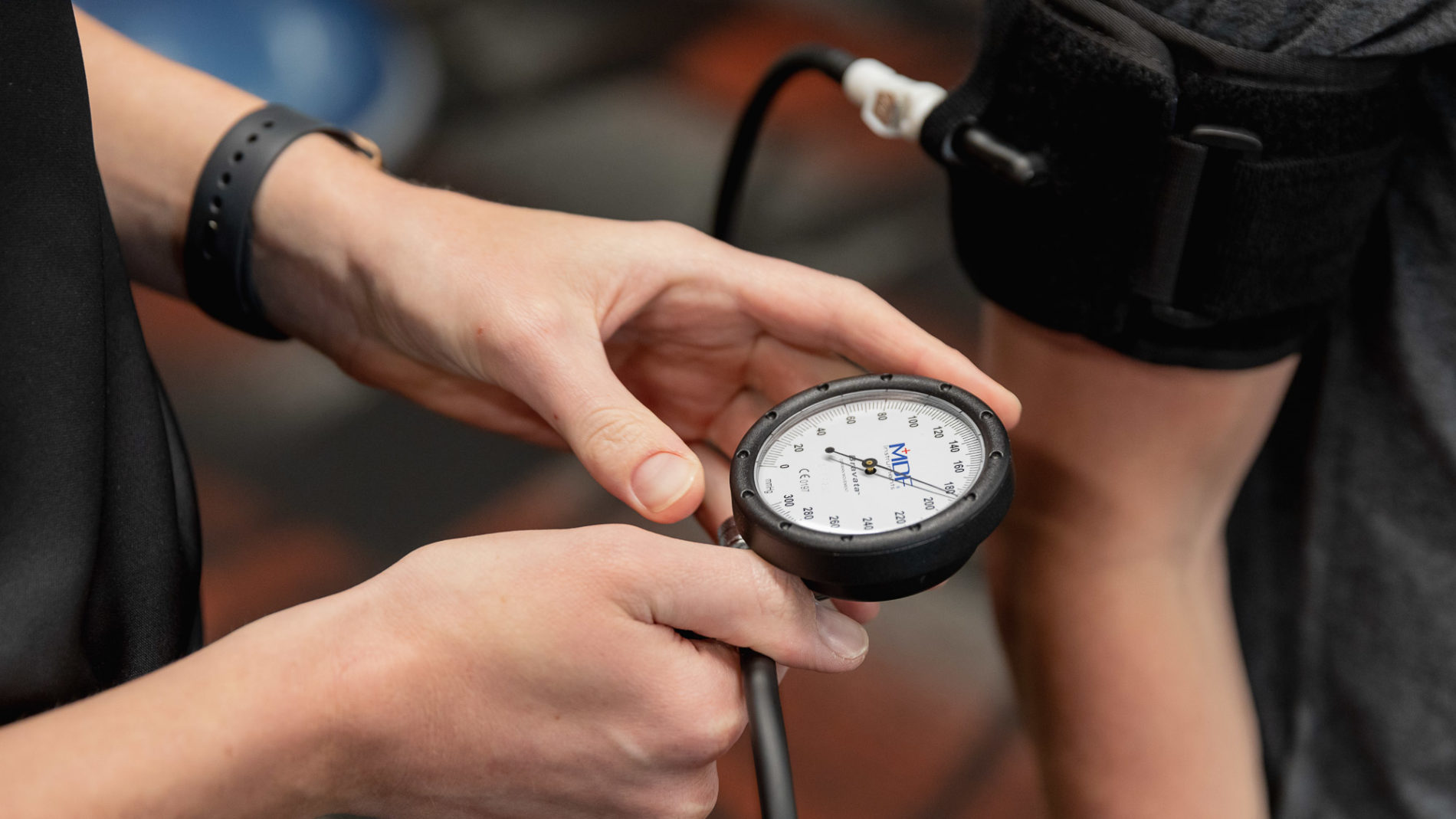
Blood Flow Restriction Training at F.I.T.
At F.I.T. Muscle & Joint Clinic, our chiropractors incorporate Blood Flow Restriction Training in Kansas City as part of our overall comprehensive and individualized treatment plan.
We include this in our personalized care plans for athletes and other patients in order to maximize outcomes and help you achieve your goals with maximal efficiency and effectiveness. After all, we want to leave you Better Than Before.
With our BFR training, we amplify the intensity of workouts without packing on additional weights. This makes the training great for patients suffering from injuries, recovering from surgery, or simply wanting to improve their physical performance. Oftentimes, BFR leads to shorter rehabilitation times, less pain during recovery, and increased muscle strength.
Through our unique approach, patients can achieve the same growth at 20-30%% of their 1-rep max, allowing the body to properly heal the tissue in the meantime.
Blood Flow Restriction Training in Kansas City may also trigger the release of growth hormone (GH). However contrary to popular belief, GH does not directly lead to muscle growth. Instead it acts as a muscle and tendon protector through the collagen synthesis process. The protection offers even more benefit to the rehab process when addressing stubborn tendinopathy issues (i.e. achilles tendonitis, tennis elbow, patellar tendonitis, etc.) and ligament injuries, such as lateral ankle sprains.
There are two types of muscles to consider—Type I and Type II. Type I muscle fibers rely on oxygen (aerobic metabolism) for their energy source and typically do not respond as significantly with changes in size/strength, but are often recruited first by the body because of their low “metabolic cost.” Type II muscle fibers are larger, thicker, and rely on glucose/glycogen (anaerobic metabolism) for their energy source; these are recruited by the body for movements and tasks that require more strength, speed, and overall force. They have the greatest capacity for change in size and strength.
During a period of rest or disuse (think when one is not able to train, workout, or has sustained an injury), Type II muscle fibers are the first ones to go because they are more metabolically demanding for the body to maintain.
This can result in significant atrophy and a loss of strength and overall functional capacity. By implementing Blood Flow Restriction Training, we can work around this period of detraining or injury to maximally preserve and even improve the strength, capacity and size of the Type II muscle fibers we have in our bodies.
Since our BFR training restricts blood flow, it also restricts oxygen to the muscle. That means the body must turn to Type II muscles to push through the exercise. Therefore patients can improve performance, muscle hypertrophy, and work capacity more effectively while also using lower loads.
It is also easier to exercise to fatigue under Blood Flow Restriction, which is one of the biggest predictors that continues to emerge as a factor in stimulating muscle growth and strength in scientific literature.
Along with anaerobic improvements in muscle hypertrophy and strength, BFR at F.I.T. Muscle & Joint Clinic can improve aerobic and cardiovascular health. The process can increase your aerobic capabilities and has shown great carryover to improvements in more aerobic-based activities and training endeavors, such as cycling, running, and rowing.
We offer Blood Flow Restriction Training to a variety of patients including, injured athletes, pre- and post-surgery patients, people who want to increase their anaerobic and aerobic capabilities, and more.
What does blood flow restriction training feel like?
For some patients, the idea of restricting blood may sound painful and scary. The truth is, our Blood Flow Restriction Training is not meant to hurt. Instead, it will feel like an intense workout and there is often a “good muscle burn” as you complete your training.
Some notice their muscles swelling as blood pools in the area. This is not something to be concerned about, and it actually shows that the training is working and the “cell swelling” effect is thought to be another key component in why Blood Flow Restriction Training is so effective.
As the repetitions continue, muscles will burn, maybe even sooner than a patient initially is used to. Again, this is a good sign. Patients usually do not notice any abnormal pain other than the usual pain that stems from muscle exhaustion.
Our team will monitor your blood flow and its restriction to ensure that you stay safe during each session, minimizing discomfort and maximizing recovery.
Benefits Of Blood Flow Restriction Training
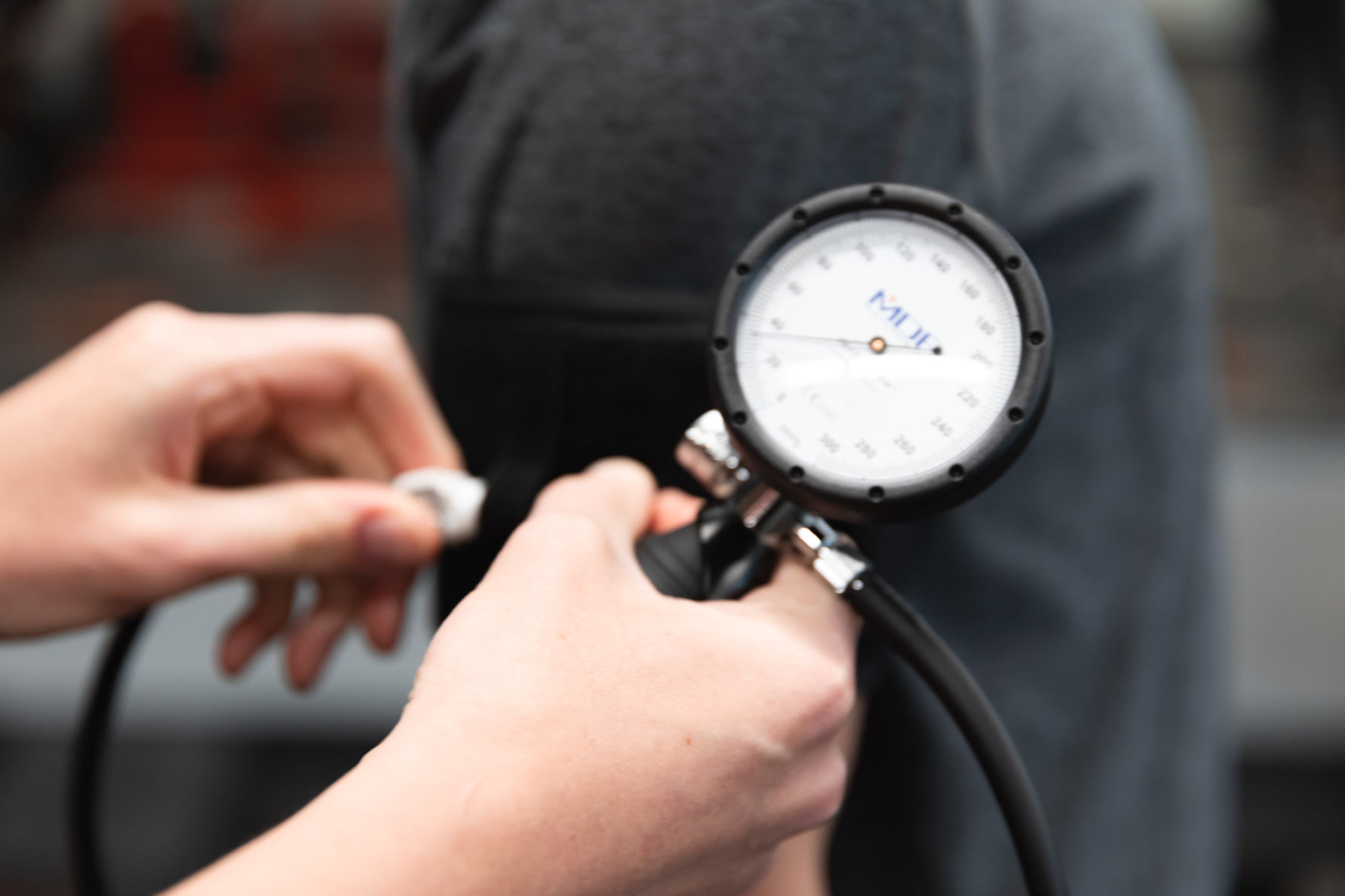
BFR promotes rehabilitation and recovery
Some patients, especially athletes, are worried they will lose muscle after an injury or surgery. They understand that rehabilitation is important, but don’t want to face the physical consequences. Fortunately, blood flow restriction training promotes healthy recovery by keeping weights low while still maintaining strength levels. This will allow our athletes to minimize the amount of work capacity and performance they lose during the recovery period and set them up for maximal success when they return to their normal training and/or sport(s).

BFR works with most exercises
With Blood Flow Restriction Training, patients don’t have to worry about switching up their workouts. Our team can create a plan using exercises you already know such as squats, lunges, bicep curls, and walking.

BRF increases strength for healthy patients
Once a patient has fully recovered, BRF still boosts muscle mass and strength levels and works as a great adjunct to your normal training. As a preventative measure our training can protect joints and muscles to avoid further injury and help you maximize the results of your hard training efforts.
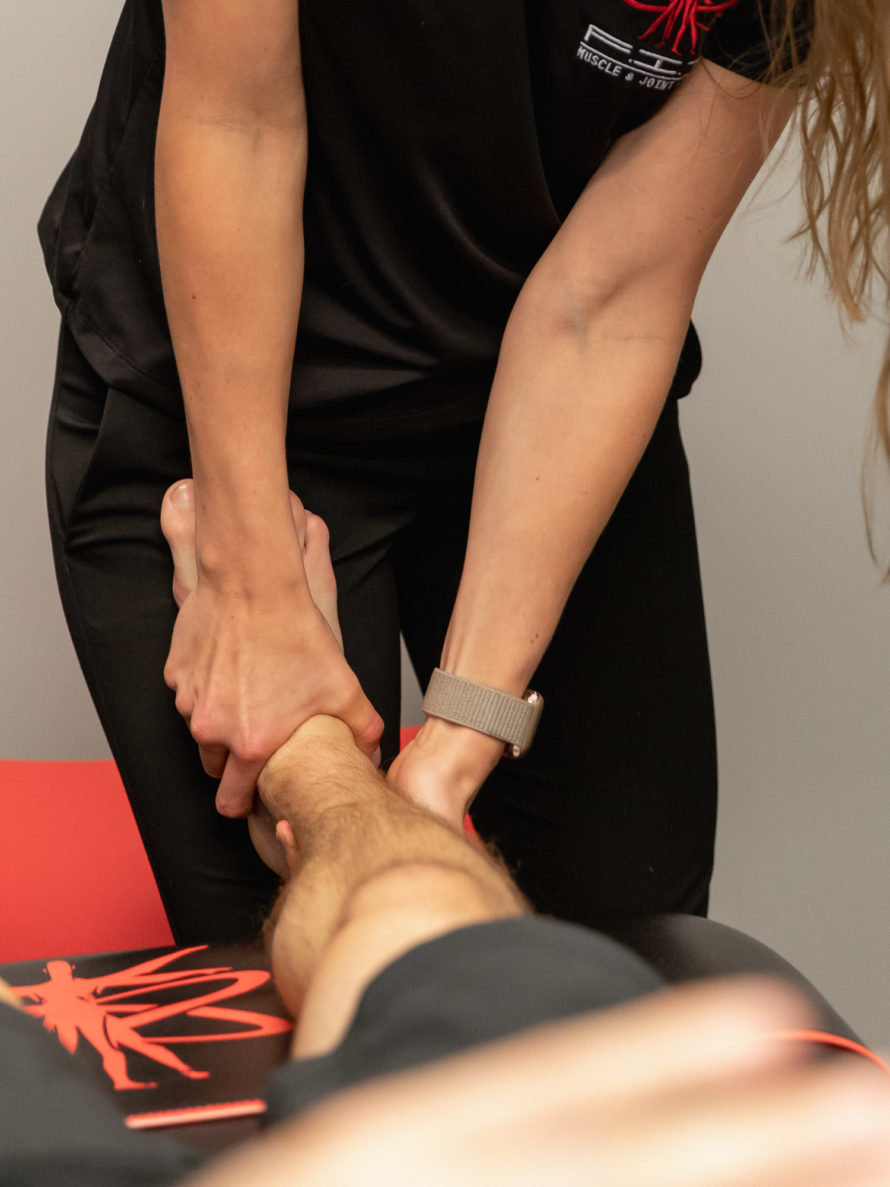
Does Blood Flow Restriction Training work for everyone?
Although Blood Flow Restriction Training in Kansas City can benefit many patients, some patients may be better off with another training or therapy method. People with a history of blood clots, heart disease, vascular disease, hypertension, and poor blood flow may want to avoid BFR.
In these cases, restricting blood flow could increase the risk of stroke. Women who are pregnant may have to find another alternative as well.
We always recommend coming to one of our 11 offices across the Kansas City metro to determine if Blood Flow Restriction Training is the right method for your body and your goals.
Is Blood Flow Restriction right for you?
Take a couple of minutes to tell us about your symptoms and/or situation and interests. This will help us determine the best treatment methods and techniques to incorporate into your treatment plan.
Visit your local F.I.T.
Meet the team at any of our 11 locations: Lee’s Summit, Crossroads, Liberty, Paola. Leawood, Blue Valley, Olathe, Kansas City, Overland Park, Raymore & Shawnee.

